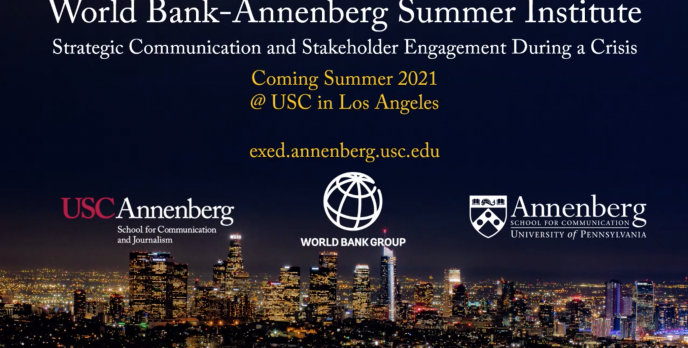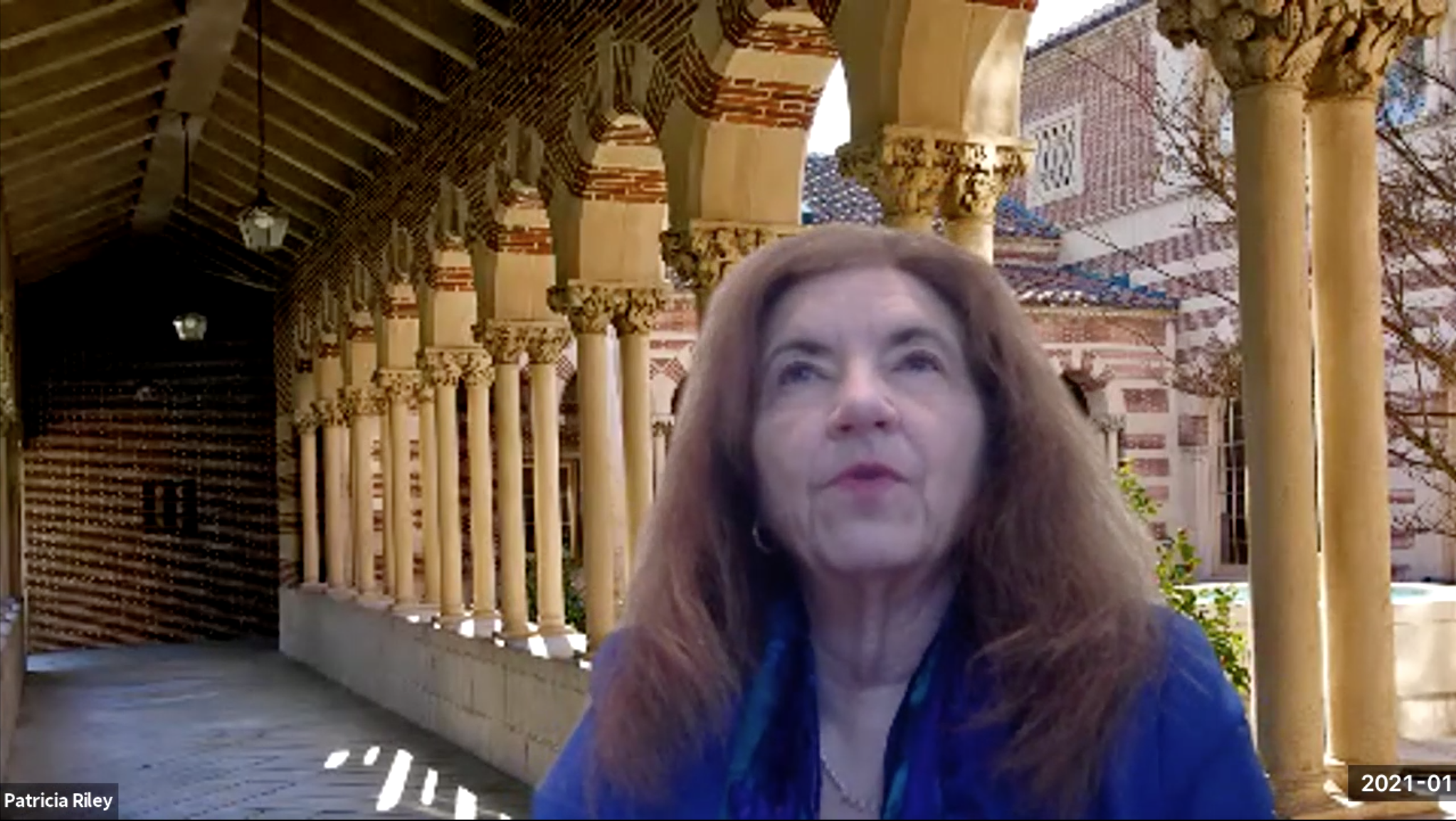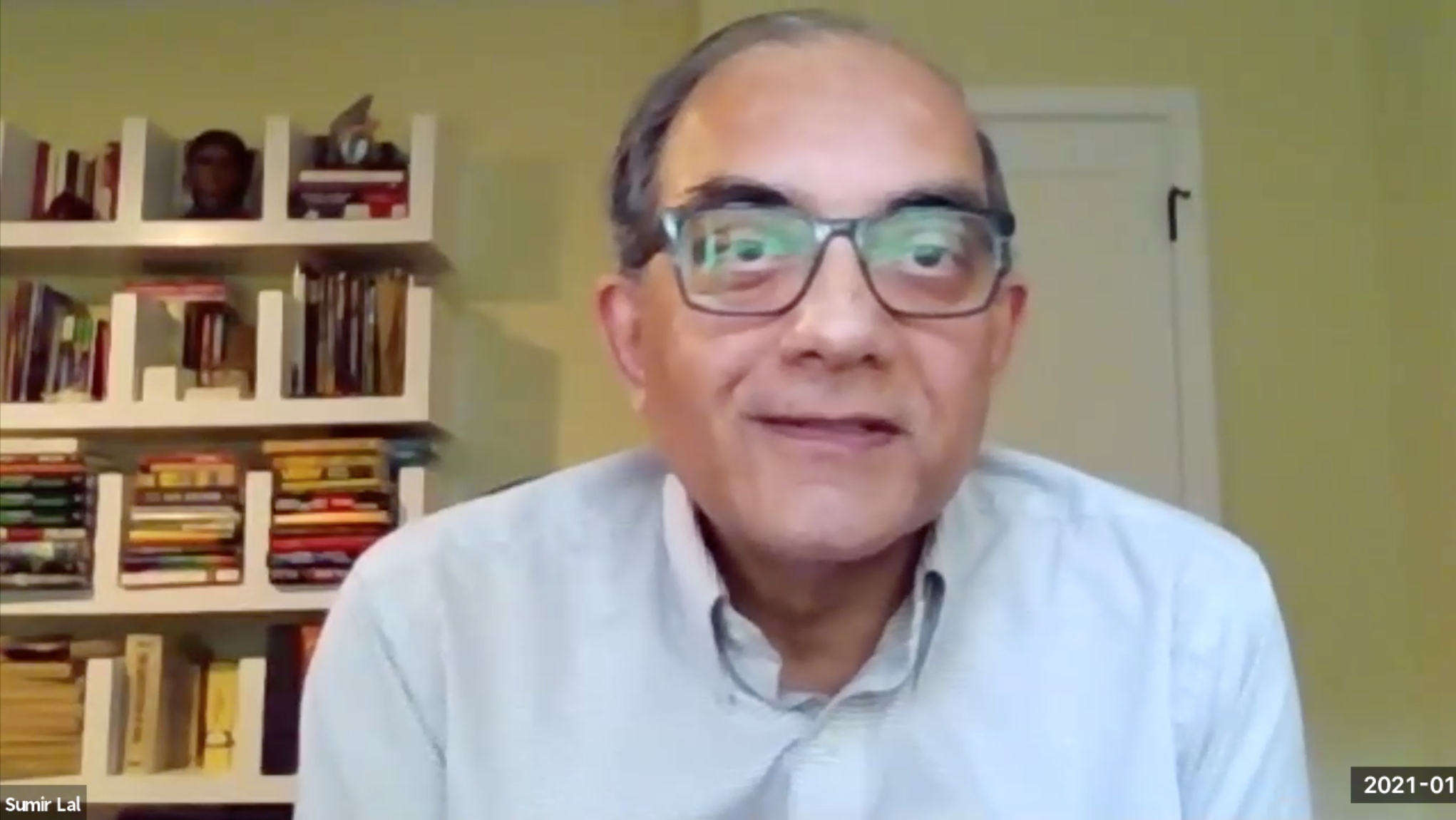Here’s what you missed from the World Bank-Annenberg Summer Institute Webinar

With more than 200 communication professionals registering from around the world, the first USC Annenberg webinar for the new year was a huge success. Here’s what you missed from the World Bank-Annenberg webinar on Strategic Communication and Stakeholder Engagement during a Crisis on Jan. 13.
Moderated by the Director of USC Annenberg Executive Education, Shellee Smith kicked off the event which featured four speakers and several Q&A segments. Attendees zoomed in from far and wide — some joining from Brazil, Senegal, Zimbabwe, and so many more countries. Their work backgrounds and experience were varied, and they came from global organizations such as the World Bank, the International Finance Corporation, Save the Children International, and more.
Before presentations began, Associate Professor of Communication Patti Riley — who helped launched the first Summer Institute with the World Bank Group and the University of Pennsylvania back in 2011— emphasized the importance of creating a program focused on “Reform Communication” which is in the ninth year of tackling “wicked,” or highly intractable social, political, and ecological problems.
“The idea is to take communication in all of its aspects and forums,” Riley said. “That's content messaging skills, different kinds of communication strategies, new communication and information technologies and processes … just looking at communication with a 360 degree lens.”
The webinar offered participants a snapshot of the annual World Bank-Annenberg Summer Institute, a program designed for professionals leading reform initiatives in developing countries. The webinar focused on three key components that are crucial when creating reforms during a crisis: strategic communication, political economy, and stakeholder engagement.

Strategic Communication
During the first presentation, Professor Riley detailed the importance of strategic communication when building reform which she calls the “Communication at the Center” (C@C) model.
“The whole notion of reform communication means that you're trying to align leadership and strategy around the three big forces of change: political will, social will, and organizational will,” Riley said. “So what we're trying to accomplish is strategically communicating with our stakeholders.”
To illustrate the model, she provided examples of what stakeholders lie within each sphere of influence — political leaders, developmental agencies, and the media. Riley said it’s critical to engage with these different entities to produce the reform needed.
“The idea is communication is always at the center of what we're trying to do and what we're trying to accomplish,” Riley said. “We’re looking at communication in all of its varieties ... we're spending a lot of time listening and engaging and trying to figure out what are the best ways to align with all of these different groups.”
Riley ended her presentation with a timely example, explaining how this model can be used to find solutions for distributing COVID-19 vaccines.

Political Economy
Following Riley, Director of External and Corporate Relations for the World Bank Sumir Lal focused on political will, introducing the concept of political economy and its role when creating reforms for various problems.
“There is no way for there to be a collective way of resolving [a social problem] because individual interests outweigh the group interest, and members of the group have different ideas, incentives, level of information interests,” Lal said. “So when we say there's a lack of political will, it's actually rational political behavior.”
To combat such frustration, Lal underscores the importance of understanding the network of interests at play when designing a reform and to not place all hope in one political figurehead. Reform is a tug of war between reformers and incumbents, according to Lal.
“A reform has to be both technically sound and politically feasible,” Lal said. “The key point is that in most reform programs, you're never going to be able to win over 100% of the stakeholders.”
Ultimately, a person must understand the stakeholders, the situation at hand, and create allies to support the political leader signing the reform.

Stakeholder Engagement
The Director of USC Annenberg’s Communication Management Master’s program Rebecca Weintraub began her presentation by emphasizing the need to focus on stakeholder centricity, not organization centricity, when producing reform.
“Putting the stakeholder at the center of the strategic communication process really changes the focus, and really puts stakeholder engagement right at the front,” Weintraub said.
She then broke down the key aspects of stakeholder engagement. From drafting strategic goals and then using data to understand the stakeholders to the last step of messaging, Weintraub detailed the steps to go about such a process.
“By understanding what it is that stakeholders want to hear, we are better able to craft our messages,” Weintraub said. “We are tailoring the elements of the messaging to the concerns and perspectives of the individual stakeholders … we want to make sure that our stakeholders are hearing messaging that relates to their concerns.”
After her presentation, audience members asked questions related to concepts Weintraub discussed. One in particular asked whether internal or external stakeholders should be prioritized to which Weintraub explained that focus on those with the most influence.
“Once you've done your analysis, I would look at it in terms of where is the influence and where are the people who can help us move people from negative to positive,” Weintraub said. “A lot of it would depend on what your strategic goal is as to whether you would look internally or externally.”

Public Procurement Project
Wrapping up the webinar, Senior Communications Officer of External and Corporate Relations for the World Bank Masud Mozzammel shared a real life example of how the aforementioned strategies were used for Bangladesh’s public procurement reform system.
“The most interesting experience was right around the first phase of the project,” Mozzammel said. “It was soon realized that the forms which are mostly technical were not progressing as expected. The technical team started realizing that the challenge was largely behavioural. The challenge was not to develop good legislation or policies … but the challenge was how to engage various stakeholders and different levels, addressing the political economy issues.”
Using techniques emphasized earlier in the webinar, Mozzammel and his team incorporated a strategic communication program into the reform efforts, successfully passing the procurement bill after creating demand from citizens.
More to come
The webinar gave the audience a glimpse into what the annual World Bank-Annenberg Summer Institute will look like this year. You might have missed the webinar, but there’s still an opportunity for you to join us at the Institute this summer. For more information, keep tabs on the USC Annenberg Executive Education website for updates on the application process.

